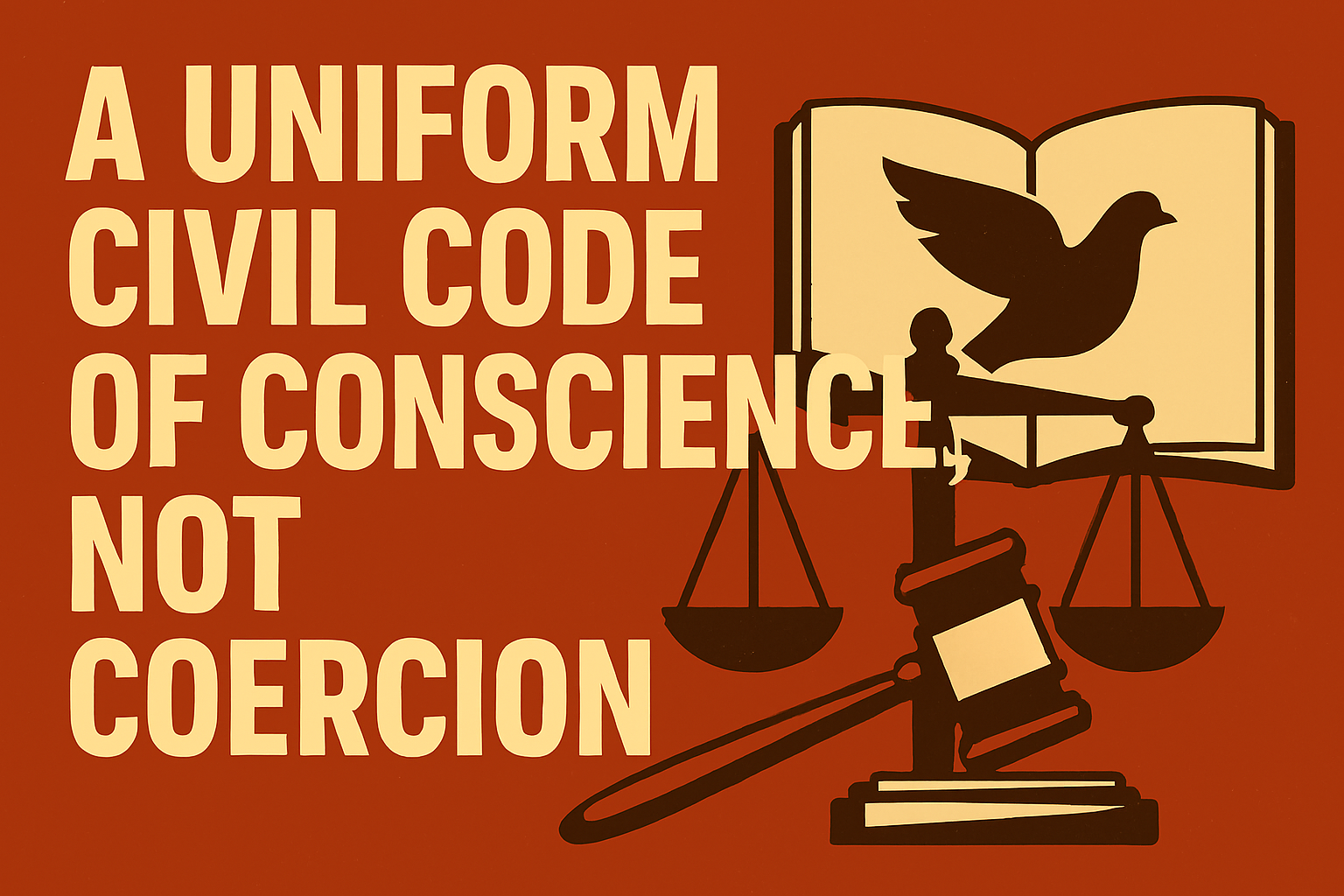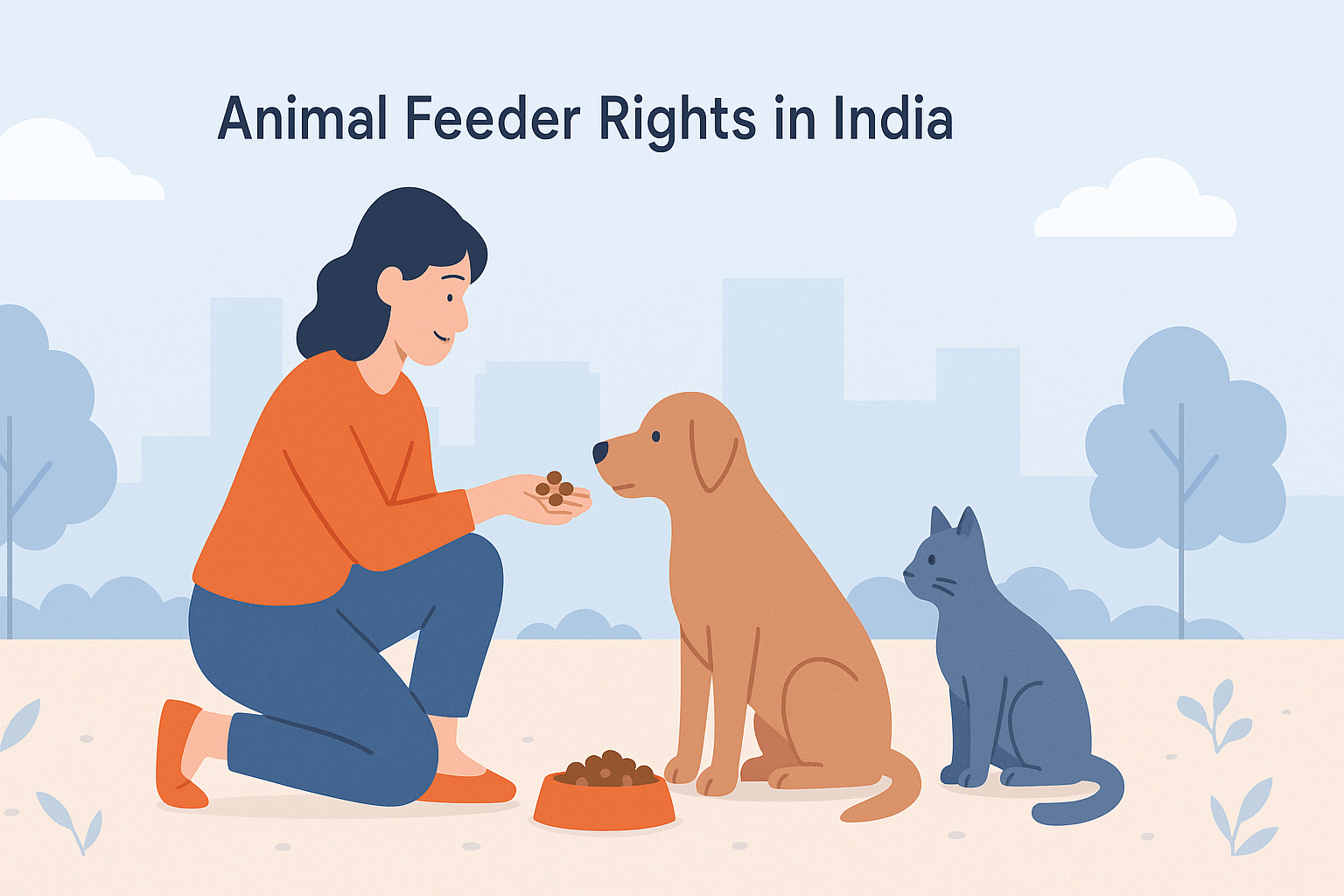



Author – Devanshe Nigam
College – Dr. K.N.K. Law College, Ratlam (M.P.)
Animal feeders in India are important in protecting the lives of stray animals who tend to be deprived of food, shelter, and care. Not only is feeding stray animals a humanitarian effort, but it also forms a critical part of urban sympathy and community well-being. But most feeders are subjected to harassment, threats, and even physical attacks by residents or the authorities. This has raised searching questions about the legal status and rights of animal feeders.
Are they volunteers or have legally enforceable rights? This article seeks to find out the legal regime governing animal feeding in India, with reference to court rulings, constitutional provisions, municipal regulations, and the rights and duties of feeders as the unofficial protectors of the voiceless.
Stray dogs and cats are also protected under a number of Indian laws. The Prevention of Cruelty to Animals Act, 1960 gives animals their fundamental right to live without any violence. Further, by Article 51A(g) of the Constitution of India, it is the fundamental obligation of all citizens to protect and enhance the natural environment, including animal life.
Stray dogs are also protected under the Animal Birth Control (Dogs) Rules, 2001, which stress sterilization and vaccination over culling. Hence, feeding stray animals becomes an extension of these legislations, showing a duty of care rather than nuisance. Courts too have progressively upheld this notion, recognizing feeding as a legal and protected activity.
Indian courts have been at the forefront of protecting the rights of animal feeders. In People for Animals v. State of Delhi (2021), the Delhi High Court noted that stray dogs are entitled to food and feeders need not be obstructed or harassed. The court instructed Resident Welfare Associations (RWAs) and the Delhi Police to create safe feeding areas and provide peace.
In another case, Animal Welfare Board of India v. A. Nagaraja (2014), the Supreme Court ruled that animals have a right to life under Article 21 of the Constitution. If animals do have a right to life, then by extension, those who assist in maintaining that life by feeding them must also be protected. The judiciary’s changing stance is compatible with the idea that animal feeders are right defenders, not rule breakers.
The greatest conflict is when citizens consider feeding stray animals to be a public nuisance. Issues tend to focus on noise, litter, or concern about violent animals. Courts, however, have made it clear that feeding is not to be prohibited but regulated sensibly. Feeding should not block public walkways, jeopardize traffic, or create cleanliness problems.
In Dr. Maya D. Chablani v. Radha R. Shah (2021), the Bombay High Court held that feeding strays is not against the law, but feeding has to be in authorized areas to not cause public inconvenience.
The equilibrium, therefore, is in the awareness of the legal right to feed animals while maintaining civic discipline. Responsible feeders need to clean up after feeding, act responsibly, and eschew controversies through collaboration with local authorities.
Section 268 (Public Nuisance) of the IPC or municipal bylaws are abused by RWAs or local authorities in some instances, to intimidate feeders. Complaints are lodged numerous times without actual nuisance, but either due to fear or bias. Legal awareness programs need to be initiated to avoid such abuse. Feeders should be taught about their rights and what to do when illegal notices or threats are issued.
Social media has enabled animal feeders to document cruelty, get support, fundraise, and even rehome rescued animals. Stray Assist, Pawtect, or WhatsApp groups within an area assist in linking feeders, NGOs, and vets. Technology could be utilized more effectively in the form of government-backed apps for feeding zone registration, sterilized dog tracking, or filing complaints about cruelty.
Municipal Corporations and RWAs usually play the role of mediators in conflicts between residents and feeders. Guiding communities on animal care has been done in cities such as Delhi, Mumbai, and Bengaluru. For example, the Animal Welfare Board of India has given advisories to give RWAs specific directions in allocating specific feeding points. But in real life, RWAs at times illegally attempt to prohibit animal feeding, intimidate feeders, or insist that strays be taken away.
No RWA or private citizen has a right to take stray animals away or forcibly end feeding unless with legal authorization. Municipal authorities need to collaborate with feeders for sterilization, vaccination, and non-violent feeding, not to quash such initiatives. Disregarding such cooperation leads to legal offenses and brutality.
Animal feeders who are threatened or abused have legal recourse. Threats and criminal intimidation are punishable offenses under Section 503 and 506 of the Indian Penal Code. Feeders can also approach the police with complaints or apply for protection under Article 21 if they are threatened with their life and liberty.
In addition, cruelty or injury to animals while feeding can be reported under Sections 428 and 429 of the IPC, which punish killing or maiming animals. The Delhi High Court has instructed police officers to safeguard feeders and take action against harassment. Feeders must report incidents, keep medical records of vaccinated animals, and engage NGOs to maintain safety. Knowledge of legal rights is essential for Feeders to uplift communities.
The basis of feeder rights is not merely in statutes but in constitutional morality. The Supreme Court has frequently reflected on the “duty of care” incurred by humans towards animals. Article 21 has been read to encompass the rights of animals to live with dignity.
The Directive Principles of State Policy under Article 48 and 48A also require protection of animal life and the environment. These provisions represent a moral and legal requirement of society to show respect for animals. Animal feeders, in this perspective, become ethical agents upholding constitutional ideals.
Their activities complement India’s tradition of ahimsa (non-violence) and compassion. They need to be acknowledged as vital players in the humane texture of Indian society, instead of being marginalized or harassed.
In spite of miscellaneous guidelines and court judgments, India does not have a uniform national policy relating to animal feeding rights. The lack of central legislation frequently results in the production of local-level disputes and practices lacking uniformity.
A national policy can establish the duties of feeders, rights of people staying there, responsibility of municipalities, and the role of police. It should encourage authorized feeding areas, sterilization campaigns, and educational campaigns. Guidance should be in a cooperative, not confrontational, mode.
A legal framework with the support of central and state governments can make animal feeding a people’s right activity. This will lower legal uncertainty, avoid harassment, and create a humane model of coexistence among humans and animals in cities.
Animal welfare activists and non-governmental organizations (NGOs) have played a key role in promoting feeder rights. Groups such as People for Animals (PFA), Blue Cross, and local shelters have not only contributed in the field of medical care and sterilization but also provided legal assistance to feeders. Civil society needs to take a more active role in connecting feeders and communities.
Workshops and Joint campaigns can make residents envision strays as part of the common urban landscape, rather than threats. Promoting adoption, fostering, and community feeding will also take pressure off municipal shelters. NGOs, with the backing of legislative reforms, can institutionalize feeding rights as a humane and legal practice.
Much of the strife around animal feeding is caused by ignorance and fear. Misunderstandings of disease, ferocity, or legal rights evoke hostility without reason. Public education is thus paramount. Schools, housing societies, and media must encourage empathy and factual information about stray animals and their guardians.
Education regarding vaccination, sterilization, and harmlessness of the majority of stray animals can alter popular perception. Civic education must also incorporate the rights and duties of animal feeders.
Municipalities and NGOs should help for creating awareness. Inculcation of compassion as a civic value and acknowledging the status of animal feeders as caretakers of the community will ensure a tolerant society that is receptive and open.
As Rights are available for animal feeders but they also had some following duties . Animal feeders should make sure the feeding is in a hygienic manner, at safe locations and not obstructing anyone.
Feeders should arrange for the sterilization and vaccination of the animals they look after with local vets or NGOs. Feeders should also refrain from feeding close to children’s playgrounds, schools, or apartment entrance to avoid clashes.
Educating neighbors, maintaining feeding areas clean, and refraining from aggressive confrontation are among the most important responsibilities of responsible feeders.
Responsible feeding could gain community respect and prevent legal warfare by setting a good example. Not only is responsible feeding an act of compassion but also a socially and legally compliant action if done with caution and coordination.
Animal feeders in India embody the spirit of compassion that our Constitution seeks to uphold. As guardians of the voiceless, their actions are rooted not just in emotion, but in legal and constitutional duties enshrined under Articles 21, 48A, and 51A(g).
Courts have affirmed their right to feed, yet social hostility, ignorance, and lack of clear guidelines often lead to conflict. These feeders play a critical role in maintaining the urban ecological balance by supporting vaccinated, sterilized animals and reducing human-animal tensions. Their contribution is public-spirited and lawful.
What India now needs is a unified legal framework that ensures their safety, promotes community collaboration, and integrates animal care into urban planning.
It is time we stop treating kindness as an inconvenience. Protecting those who protect the voiceless is not merely a legal necessity—it reflects the conscience of a civilised, compassionate nation that believes in coexistence and justice for all living beings.
Legal Framework for Animal Protection in India – Raj Panjwani
The Constitution of India – V.N. Shukla , P.M. Bakshi
Journal of Animal Law – Michigan State University College of Law
People for Animal Reports (PFA India)
PFA and AWBI Annexure
https://peepalfarm.org/yourrights
https://www.peopleforanimalsindia.org/
https://www.thelegalyoungster.com/legal-internship/
https://www.thelegalyoungster.com/category/daily-news/